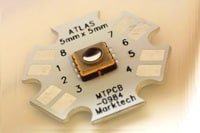By Avinash Johri, Executive Director, CVTE (India & SAARC Region)
The supply-side issues have led to an unprecedented shortage of semiconductors and crippled several industries
Since its beginning in December 2019, COVID-19 induced pandemic has impacted every sphere of our lives and businesses around us. As the world grappled with local-global travel restrictions, market demand and supply across industries took unusual turns. The recent reopening of workspaces has been inspired by vaccine optimism. However, the semiconductor shortage is still a pertinent challenge for most enterprises, including electronics and information technology. The phenomenon is as unprecedented as the pandemic itself.
The Supply-side needs an urgent fix
The global semiconductor shortage stems from both demand and supply-side reasons. However, it is the supply side of the equation that needs an urgent fix. Semiconductor manufacturing is a sophisticated and complex process, limited to very few manufacturers based in China, Taiwan, Japan, South Korea, the European Union, and the US. These manufacturers meet the entire global demand for semiconductors. The pandemic, which led to industrial lockdowns, reduced the output from these manufacturers. Even as the factories gradually reopened, various COVID-19 safety protocols kept the production under check. Last but not the least, geopolitical reasons such as trade wars, zonal military conflicts, and a substantial increase in freight cost further slowed down the cross-border movement of shipments.
The semiconductor shortage problem is also compounded due to hoarding by large businesses. From automobile, healthcare, space tech, consumer electronics, industrial manufacturing, defense, and much more, every business uses semiconductors in some ways. Sensing the acute shortage, companies who had a large inventory or privileged access ordered even larger quantities and held onto those. This hoarding creates an artificial supply chain bottleneck and competitive disadvantage for many industries. Due to the issues mentioned above, the industry average turnaround time between ordering and delivering a chipset has almost doubled between March 2020 and October 2021.
When demand becomes a part of the problem
On the demand side, there was a surge in demand for laptops, smartphones, enterprise IT equipment as work from home, online studies, telemedicine, and digital experiences become the new normal. This sudden increase in demand couldn’t be supported by an increased supply as production plans are closed months in advance, and there is barely any space to accommodate significant bumps. The combination of supply shortage and rising demand further added to the semiconductor shortage. As per a late 2019 projection by the Semiconductor Industry Association (SIA), in 2021, the industry expected a 6.3% growth in value terms. However, the association has revised this figure to 25% since then. This is the highest industry growth rate over the past six years.
For the electronics and IT industry, the shortfall of chipsets meant that the input cost for contract manufacturers and original equipment manufacturers (OEMs) went up substantially. As a result, these companies had to pass on a substantial part of this cost to consumers. Additionally, they had to look for alternate ways to ensure tight inventory planning, value engineering, and even risk missing some critical delivery milestones. Thus, there was more emphasis on technology-led supply chain management, product roadmap execution, and future-gazing through AI-based mathematical models.
Consumers and businesses, ultimately using these electronics and IT equipment, also had to stretch their budgets to some extent. Thankfully, in most cases, work from home brought down the operational expenses for these stakeholders. Chance, for example, is reduced commute for employees and minimal maintenance cost for office space for businesses. Thus, they could afford the increased prices for electronics and IT equipment. However, purchase for discretionary electronics and IT equipment was put on hold in many cases, while only necessary items were prioritized.
Businesses need to walk the tightrope
A look at the critical indicators from the semiconductor industry suggests that the supply shortfall may not go away anytime soon. Thus, companies in the electronics & IT equipment space have to look at new ways of engaging with consumers, continuing their business, and retaining their competitive edge. One such way is to provide additional features to consumers to help them realize better value for their money. These features could be as simple as ergonomic enhancements, which do not need other chipsets. As a result, there is no additional pressure on profit margins.
The companies also need to take consumers into confidence to understand the rationale behind the sudden jump in prices and how their preferred electronics brands are navigating the situation. One way to do this is to launch an industry-wide consumer education campaign on the issue. Such an effort builds long-term equity between businesses and consumers.
OEMs also have an added advantage as they can prioritize their private labels over market demand compared to contract manufacturers. They can tweak this private label portfolio to roll out products that require a comparatively lesser number of chipsets. By doing so, they can prolong their semiconductor inventory, place fewer orders in a heated market and deliver more value to their consumers. When the supply of semiconductors improves, they can quickly pivot their product portfolio once again to address the market demand at more competitive prices.






